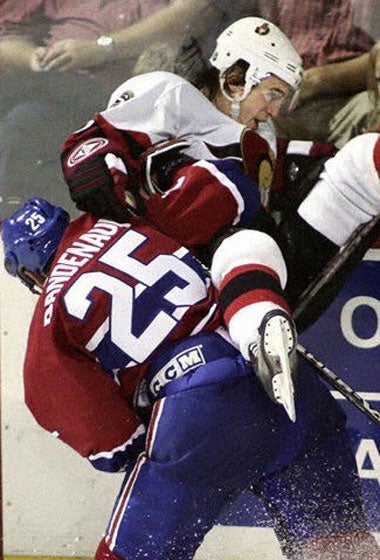Ice Hockey: The NHL emerges from the big freeze
The NHL returns tonight after losing last season to a pay dispute. Will a new attacking style bring the game in from the cold? Rupert Cornwell reports

For aficionados, the experience will be like watching the first shoots of spring. At last, the National Hockey League is back. And over the coming months a question never before posed will be answered. Can a struggling sport bounce back from losing an entire season to a labour dispute - the first US major league ever to suffer such an indignity?
At least hope is in the air - so different from a year ago when the sport limped off stage, in what seemed to many to be terminal decline. In the 2003-04 season, the 30 NHL teams lost $230m (£130m) between them. Fans (and the TV networks) might have been deserting the game in disillusion at negative play and an ever declining scoring rate, but the average player's salary had risen to $1.8m.
In such a shambles were hockey's finances that Ted Leonsis, the vice-chairman of AOL and owner of the Washington Capitals, argued it was cheaper to shut down the game completely. Hockey's claim to a seat at the top table of US sport along with baseball, basketball and American football had never looked more threadbare. Something had to be done. It was.
Last September, after talks between the league and the players' union on a new contract collapsed, the NHL commissioner Gary Bettman locked the players out of training camps for the 2004-05 season. For 310 days those gates remained locked, until a deal this July. It represented total victory for the owners.
The new contract cut salaries on all existing player contracts by 24 per cent. It imposed a salary cap, permitting a payroll ceiling on each team, ranging from $21.5m to $39m in the first year, based on projected total league revenue of $1.7bn. No single player can be paid more than 20 per cent of his team's overall cap. This means a maximum individual salary of $7.8m, compared to the $10m the very top stars earned in the good old days.
If anything however, the financial revolution pales beside the intended one on the ice. The NHL has introduced rule changes to encourage end-to-end play.
The goals have been moved closer to the end boards, effectively lengthening the rink by four feet and making it harder for goaltenders to deal with ricochets. The size of pads and other protection they wear - often seeming to blot out the entire net - has been reduced by 11 per cent.
Referees have been told to clamp down on obstruction and violent play by defenders - meaning more penalties, more extra-man power-plays and probably more goals. No longer will ties be permitted.
If the score is still level after a five-minute overtime, the game will be decided by sudden-death shoot-outs, pitting a single player against the goaltender.
Hockey, in short, has tilted its playing field in favour of attacking. But will spectators return? The NHL is counting on most of hockey's devoted, existing fans returning, and expects to win new ones with a more thrilling spectacle.
The new rules should reward players who were already the most exciting speed skaters with vision and deft puck control, like Martin St Louis of the Tampa Bay Lightning or Peter Forsberg of the Philadelphia Flyers.
Then there are the new stars, the Capitals' young Russian phenomenon Alexander Ovechkin, and 18-year-old Sidney Crosby of the Pittsburgh Penguins, whom none less than "The Great One", Wayne Gretzky himself, has hailed as "The Next One".
The other night, Washington's MCI arena perhaps offered a glimpse of the future, as the Capitals took on the Flyers, who eventually won 7-6, after twice coming back from four-goal deficits. For neutrals it was a dream, brimming with action and settled by a sudden death shoot-out.
But it won't be easy. Tumbling ratings, followed by a lost season, cost hockey its slot on the major ESPN sports network. It will now be seen on the less accessible and less lucrative Outdoor Life Network.
In contrast to the direst predictions, all 30 franchises are still around, and in hockey's chilly heartland of Canada and the north-eastern quadrant of the US, the game is secure.
But whether it survives in the newer sunbelt franchises, where the sport is as indigenous as a polar bear in the Sahara, is another matter. Most important, however, pucks are again about to fizz across the ice and that's more than hockey has offered for a very long while.
Subscribe to Independent Premium to bookmark this article
Want to bookmark your favourite articles and stories to read or reference later? Start your Independent Premium subscription today.

Join our commenting forum
Join thought-provoking conversations, follow other Independent readers and see their replies